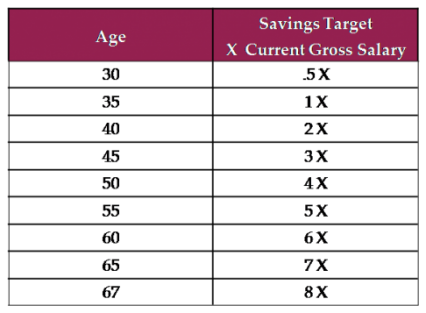That Six Letter Word
Audio Version: Let Me Hear It!
We get it. You haven’t worked on a budget because you had to wash your hair. Feel free to insert your additional excuses here. Budgeting doesn’t necessarily mean that you have to spend less. It’s about knowing where your money is going, and, knowledge is power. Once you identify your money trail, you will know if you’re staying true to your values. 
We’ll make it simple. A very easy way to see if your spending habits are healthy is to take stock of what you’re saving. Include savings toward 401(k)’s or other employer plans, IRAs, investment accounts, bank savings and/or anywhere else you may be socking money away. If you are saving at least 20% of your after-tax income, then your current spending habits are healthy. Keep the 50-30-20 Rule of Thumb in mind, and you’ll be A-OK.
Not saving 20%? Don’t panic. It’s just time to take a closer look at how you’re spending your money. Consider using an expense tracker to help capture everything. Or, look into a budgeting tool like mint or Quicken to track and categorize your spending. Then, organize your expenses into two categories: needs and wants. Consider your “needs” to be expenses that cannot be avoided and are essential to your basic needs. Everything else is a “want.”
 If you’re like most people, your allocation towards “wants” may surprise you and there are likely simple changes that will go a long way. If nothing else, knowing how you have been spending will make you more aware of mindless credit card swipes and your spending habits will start to change. We promise. If you are overspending on needs, it may be that your home is stretching you too thin or private school for the kids might be eating into your retirement nest egg.
If you’re like most people, your allocation towards “wants” may surprise you and there are likely simple changes that will go a long way. If nothing else, knowing how you have been spending will make you more aware of mindless credit card swipes and your spending habits will start to change. We promise. If you are overspending on needs, it may be that your home is stretching you too thin or private school for the kids might be eating into your retirement nest egg. Saving 20%? Before enjoying that next splurge, check to see if your cumulative savings is on track. After all, your current spending will not reflect your previous habits but your nest egg will. To see if you’re on track (to not have to work forever), refer to the minimum saving targets by age, below. If your cumulative savings is not on track, work with your financial advisor or use an online calculator to determine how much more you will need to save to catch-up.
Saving 20% and the nest egg is on track? Well done! Just be sure to avoid the sneaky little lifestyle creep we’ve talked about. In other words, don’t let your lifestyle grow in proportion to your income. Rather than spending more with salary increases or bonuses, save them!
